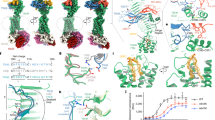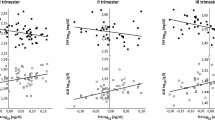Abstract
MANY investigators have shown that catecholamines are unusually stable in whole blood1,2. The persistence of catecholamines in blood has variously been attributed to non-specific absorption by erythrocytes3, platelets4, phospholipids5 and albumin (Cohen-Fraction V)6. Bovine adrenal glands perfused with acetylcholine containing Locke's solution have been shown to release catecholamines and a specific protein into the perfusate7, and recent work utilizing tritiated noradrenaline has demonstrated that intravenously administered catecholamines are removed from the circulation in at least two stages: an initial rapid phase causing disappearance of 60–70 per cent of a given dose within 2 min and a slow phase lasting several hours8. These data suggest that under physiological conditions circulating catecholamines may bind to formed blood elements and thereby become temporarily unavailable for biotransformation. The present investigation was undertaken to determine whether circulating catecholamines were bound to a specific protein component of plasma (catecholamine binding protein) in a manner analogous to corticosteroid binding globulin9 or thyroxine binding globulin10.
This is a preview of subscription content, access via your institution
Access options
Subscribe to this journal
Receive 51 print issues and online access
$199.00 per year
only $3.90 per issue
Buy this article
- Purchase on Springer Link
- Instant access to full article PDF
Prices may be subject to local taxes which are calculated during checkout
Similar content being viewed by others
References
Oliver, G., and Schäfer, E. A., J. Physiol., 17, IX (1895).
Dale, H. H., and Laidlow, P. P., J. Physiol., 45, 1 (1926).
Bain, W. A., Gaunt, W., and Suffolk, S., J. Physiol., 91, 233 (1937).
Weil-Malherbe, H., and Bone, A., Biochem. J., 70, 14 (1958).
Norlander, O., Acta Physiol. Scand., 21, 325 (1950).
Antoniades, H. N., Goldfien, A., Zileli, S., and Elmadjian, F., Proc. Soc. Exp. Med., 97, 11 (1958).
Kirshner, N., Sage, H., Smith, W. J., and Kirshner, A. G., The Pharmacologist, 8, 194 (1966).
Axelrod, J., Weil-Malherbe, H., and Tomchick, R., J. Pharm. Exp. Therap., 127, 251 (1959).
Daughaday, W. H., J. Clin. Invest., 35, 1434 (1956).
Gordon, A. H., Gross, J., O'Conner, D., and Pitt-Rivers, R., Nature, 169, 19 (1952).
Smithies, O., Biochem. J., 71, 585 (1959).
Author information
Authors and Affiliations
Rights and permissions
About this article
Cite this article
MIRKIN, B., BROWN, D. & ULSTROM, R. Catecholamine Binding Protein: Binding of Tritium to a Specific Protein Fraction of Human Plasma following in vitro Incubation with Tritiated Noradrenaline. Nature 212, 1270–1271 (1966). https://doi.org/10.1038/2121270a0
Published:
Issue Date:
DOI: https://doi.org/10.1038/2121270a0
This article is cited by
-
Binding and Clearance of Radioactive Adrenaline and Noradrenaline in Sheep Blood
Veterinary Research Communications (2006)
-
In vitro interaction of enkephalin with serum and chromaffin granule components
Experientia (1980)
-
Binding of exogenous noradrenaline by the proteins of dog plasma
Naunyn-Schmiedeberg's Archives of Pharmacology (1974)
-
Quantitative Analyse der Catecholamin-Biosynthese des Nebennierenmarks in vivo und Ruhesekretion neugebildeter Amine unter besonderer Ber�cksichtigung des Dopamins
Naunyn-Schmiedebergs Archiv f�r Pharmakologie (1969)
-
Resting secretion of dopamine from the adrenal glands of the cat in vivo
Experientia (1967)
Comments
By submitting a comment you agree to abide by our Terms and Community Guidelines. If you find something abusive or that does not comply with our terms or guidelines please flag it as inappropriate.



